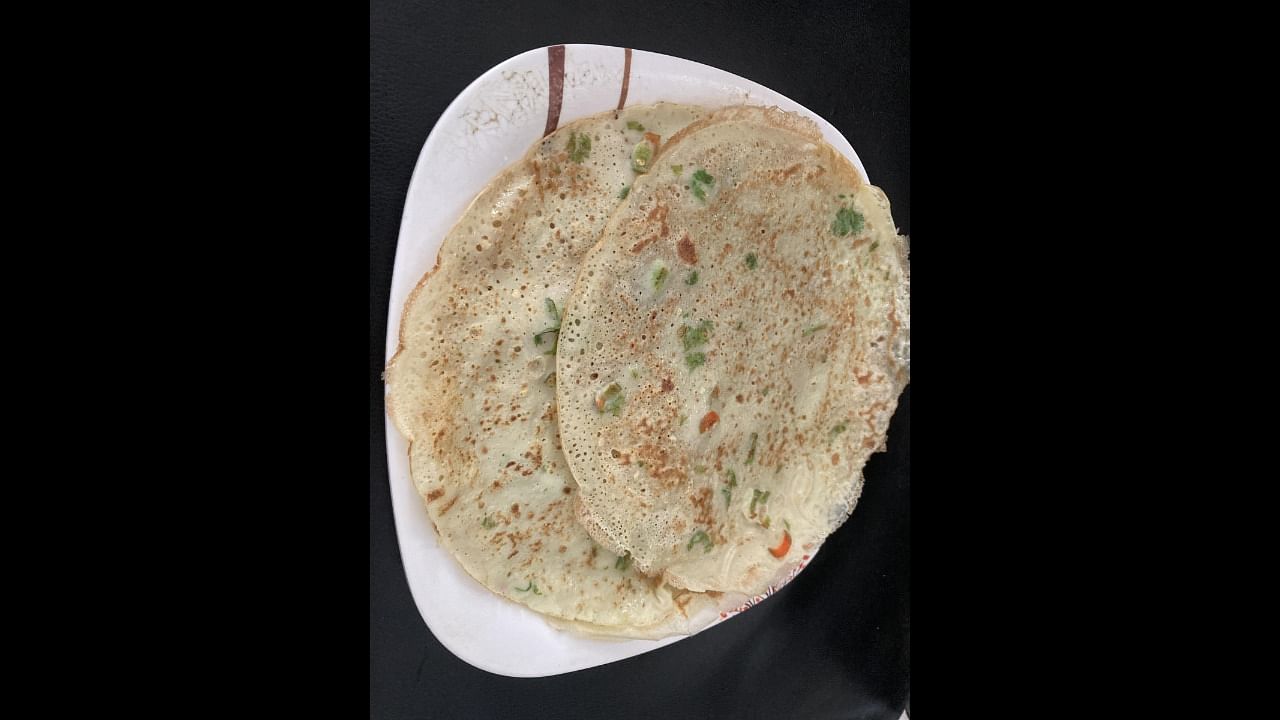

There is nothing like a good breakfast to power the day. And if it is a variety of pancakes/crepes, your day is sure to brim with happiness. The cuisine of Navayaths, a Muslim community in coastal Uttara Kannada, is known for its distinct taste and flavour. Their food reflects their history and way of life.
More than 200 items are rustled up for breakfast alone, and they have been documented in a song compiled and sung by the late Shabbeer Baida, a gifted poet. Among the plethora of breakfast items (a few are also served during dinner) are a variety of appos, the traditional pancakes/crepes, most of them unique to the Navayath community. The disc-shaped dish is a worldwide phenomenon with many countries having their own versions of it. India too has innumerable varieties of pancakes spread across different regions and communities, but the appos of the Navayath community stand apart.
The list of appos is never-ending. Starting with basic appos like Hauka appo (using only basmati rice and grated coconut), Urdha appo (boiled rice, half cup of white rice and urad dal), and Pathal appo to flavoured ones like Goda appo (jaggery), Shoupapana appo (dill leaves), Kaazua appo (cashew apple), Nasna appo (ragi), Kela appo (banana), Fansa Goda appo (jackfruit), Tariye appo (semolina), Fauwa appo (beaten rice/poha), to Malpuras (savoury and sweet crepes), Mattappam (maida, milk and egg), and Watallo Thalla appo, among others.
Hauka appo, Urdha appo and Pathal appo are the basic types regularly found on the breakfast menu. Hauka appo, prepared with a batter of coconut and rice, is a thin, crisp, fluffy crepe that requires no fermentation. Urdha appo is made of urad dal, mota or parboiled rice, suray rice, plus cooked mota rice, soda, salt and methi. These pancakes can be eaten either with ghee and sugar or honey, but are generally consumed along with chutney and dal. Pattal appo (maida, eggs, a pinch of salt and water) is a feather-light thin crepe, slathered on top with a generous dollop of ghee and sugar. It just melts in one’s mouth.
An extremely delicious and healthy variety is the Shopapni appo, a variant of the Pattal appo, which is prepared by adding the juice of dill leaves to the batter.
The hearty flavour of Goda appo is irresistible! It’s a thicker version of the dosa, and is prepared by adding jaggery, including soda bicarb, and requires the batter to be fermented.
A wholesome appo that’s warming, and has a high nutritional profile, is the Nasna (ragi flour) appo. Made by adding ragi powder and coconut milk to the basic crepes batter, Nasna appo, which used to be a once-in-a-while item, has now become one of the favourites, taking into account the millet’s multiple health benefits.
“Not all pancakes/crepes are fermented, a few can be prepared instantly; only the dosa-type appos like Urdha appo, Goda appo and Matta appo need fermentation. Proper fermentation is the key to making appos fluffier,” says Farhiin Mohtisham, a food researcher and cookery expert from the Navayath community.
Using these appos as a base, a few other standalone items are also made, and they are absolutely delightful. Some are Bafaqqi poli, Al Basra poli and Appa gudio.
With crepes/pancakes alone having so many traditional varieties, one wonders as to how many varieties of cuisine the Navayaths may have in the case of other items!
Shoupapana appo
Ingredients
Shoupapana (dill leaves) bunch: 1-2
Coconut milk powder: 1/125 gms
Basmati rice: 1/4 cup soaked for 3-4 hrs
Eggs: 5 (large)
Maida: 125 gms
Salt: a pinch
Method
Chop shoupapana (dill leaves) roughly and grind in the blender by adding little water, and extract the juice twice.
Grind coconut by adding little water and extract thick milk.
Grind basmati rice into a fine paste.
Now mix everything and blend in the batter.
Grease the pan with little oil and pour a ladle of batter. Swirl the pan immediately to make a thin crepe/appo.
Cook till the sides of the appo turn light brown. Flip and transfer on a plate.
Brush the appo with ghee and sprinkle sugar.
Repeat the procedure till you finish all the batter.
(Recipe courtesy Farhiin Mohtisham.)